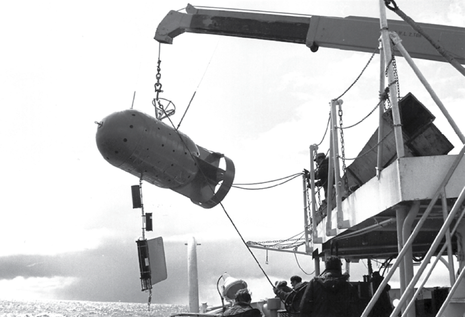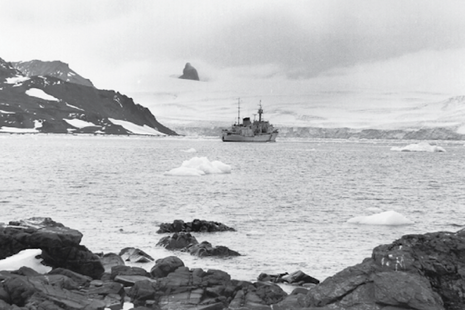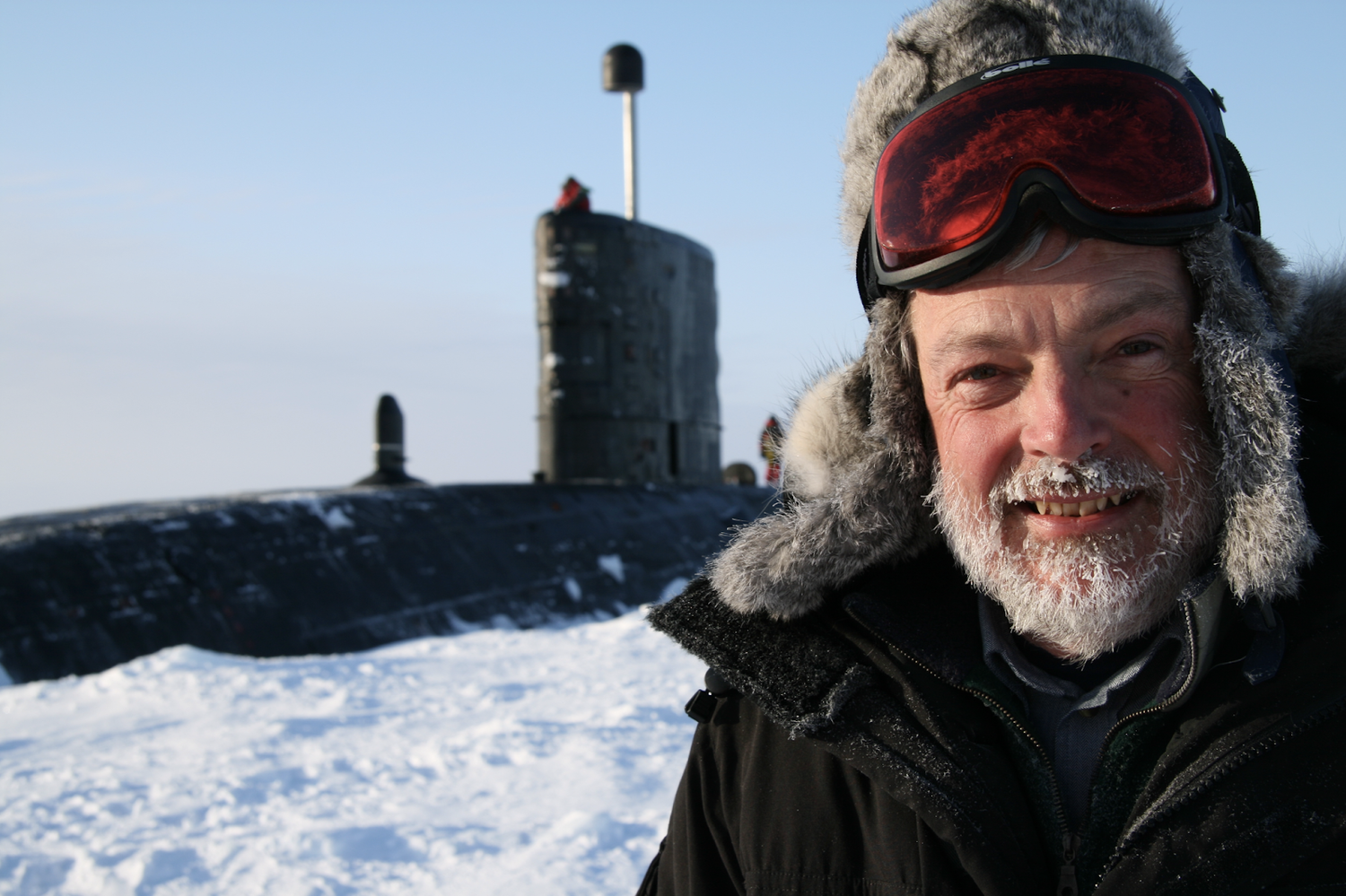I was fortunate enough to spend some time talking with Professor Peter Wadhams this week, who is currently a visiting Professor at the Politecnico di Torino, as well as being an Emeritus Professor of Ocean Physics at Cambridge’s Department of Applied Mathematics and Theoretical Physics. We covered a range of topics, but the main purpose of our discussion was to explore Wadhams’ experience leading the science committee of the brand new, all-electric motorsport, Extreme E, which aims to “race without a trace” and raise awareness of climate change.
First and foremost, I was interested in learning more about Wadhams’ career, particularly how he went from his first degree studying Physics at Churchill College (1966-69) to being a world-recognised authority on sea ice and climate change in the polar regions. Wadhams had always wanted to go to sea; he describes a “strange feeling inside” which compelled him towards the oceans, perhaps because previous generations of his family had been sailors. Rather than becoming a merchant seaman, however, Wadhams was encouraged by his headmaster to apply to Cambridge. The possibility of combining scientific research with going to sea and studying ocean processes first hand therefore led him to oceanography.
“The only way we can stand up to the threat of climate change is by moving beyond our differences and working together.”
Throughout his career, Wadhams has observed polar sea ice – described in his book A Farewell to Ice as a “canary in the mine” of planetary climate change. Central to his research is measuring both how much and how fast our sea ice is thinning, with the objective of determining how long we have before it disappears entirely.
For Wadhams, “the best came first”, as he embarked upon his first oceanographic voyage as an assistant on board the CSS Hudson in 1969-70. The 11-month expedition accomplished the first, and still the only, circumnavigation of the Americas and involved multidisciplinary oceanographic and marine geophysical work in the South Atlantic, Antarctic, Pacific, and Arctic oceans. Impressively, the ship was only the sixth ever to transit the Northwest Passage through the Canadian Arctic Archipelago. It was clear that this experience remains a career highlight for Wadhams, but he also admitted that his first ever submarine research trip was also very enjoyable, giving him the opportunity to measure sea ice thickness with sonar and “fixing his fate” as a polar oceanographer.
Professor Wadhams’ most recent role is as the Head of the Extreme E Scientific Committee, as well as its resident arctic scientist. I asked him what inspired him to get involved in the project, which seeks to use the high profile nature of sports to raise awareness and encourage decisive climate action. Wadhams admitted that he’s not exactly a superfan of motorsports in general, but in this case he makes an exception.
“The expertise provided by each scientific committee member will enable Extreme E to optimise its efforts in each location.”
Through his work with the Centre for Climate Repair at Cambridge, Wadhams was approached by Extreme E to become head of its Scientific Committee. He was clearly impressed by its founder Alejandro Agag’s enthusiasm for environmental activism, as well as using motorsport to highlight some of the most endangered global ecosystems. The fact that the scientific basis of the series is taken seriously was also important for Wadhams, particularly the combination of research, direct action and a legacy programme to follow through on efforts to combat climate change in each region visited.
Wadhams’ depth of knowledge and involvement in climate change research informed his 2016 book, Farewell to Ice, which seeks to bring his scientific expertise to the layperson, combining scientific data with his personal experiences. We agreed that this connects aptly to the environmental objectives of Extreme E. The motor racing series seeks to educate its audience about the very real dangers of climate change, while also promoting individual action to reduce our carbon footprints – such as through the “Count Us In Challenge.” From carbon offsetting to technological advances, such as hydrogen fuel cell charging and incredibly fast, agile electric vehicles, what seems to have impressed Wadhams the most about Extreme E is the opportunity to put an environmental message at front and centre.

Wadhams has always believed that “if you’ve got a message... and the science to back it up, you really must express it as strongly as you possibly can.” Most important is sharing the tangible consequences of often overwhelming data “in a way that people can understand.” By racing in already damaged ecosystems, Extreme E can directly demonstrate the consequences of climate change, for those of us who cannot (yet) see them first hand. For Wadhams, the importance of presenting facts in a simple way cannot be understated: “if you’re not capable of explaining something in a way that anybody can understand... it means you probably don’t understand it yourself.” By conveying information in this way, the reality that we must take action about climate change – as well as why this is the case – can best be impressed upon an audience.
The fact that Extreme E avoids greenwashing and truly prioritises its environmental action is very impressive – the scientific committee has a specialist for each ecosystem where races will take place. Future series will look to continue the work in other parts of the world.
“For Wadhams, one of the main take-aways he hopes the audience takes from Extreme E is how the excitement of competitive racing can be delivered without fossil fuels or CO2 output.”
In May, the next race at Lac Rose, Senegal will see Extreme E working with a local NGO Oceanium to plant one million mangrove trees across five areas totalling 60 hectares. In addition to being an excellent carbon store, mangroves reduce flooding and erosion from storms, filter salt and pollutants from water and act as nurseries for fish. The expertise provided by each scientific committee member will enable Extreme E to optimise its efforts in each location. Each committee member and the Extreme E team itself have found a collaborative system through which ideas can be contributed and exciting projects can be explored, including interdisciplinary research.
Another fascinating aspect of the series is its floating paddock, the St Helena, retrofitted to be as environmentally friendly as possible. As well as transporting technicians, team members and the magnificent Odyssey 21 SUVs between races, the ship is equipped with a lab and facilities to undertake a range of oceanographic work.

For Wadhams, one of the main take-aways he hopes the audience takes from Extreme E is how the excitement of competitive racing can be delivered without fossil fuels or CO2 output. In this way, the thrills and spills of racing can be directly linked to a demonstration of the benefits of electric vehicles. “Knowledge is everything” – by running educational programmes and discussing environmentally friendly aspects of the series even in the commentary, Extreme E looks to educate its viewers about the urgency of climate action.
Choosing the Arctic X Prix location in Greenland, where the disappearance of sea ice and solutions to protect it will be researched, ultimately emerged thanks to insider knowledge from Wadhams. He had encountered a test track being used by VW several years prior which was then abandoned – when he retraced the trail with the Extreme E team, they found a great, flat area to work with and to begin putting together a course.
“For Wadhams, the importance of presenting facts in a simple way cannot be understated”
Of course, we couldn’t have a conversation about climate change without discussing Greta Thunberg and the Fridays for Future movement. Generally, motorsports has an increasingly young audience; Formula 1, for example, has seen a huge increase in its proportion of teen and young adult fans. This is a very similar demographic to the huge numbers of protestors and school strikers who have demonstrated for immediate and decisive climate action by governments globally.
I asked Professor Wadhams how he thinks we can bridge what seems to be a generational gap in people’s concern for the climate. Wadhams noted how in recent years, there has been an insistence for postgraduate study in climate change, driven by the demand among students to learn about the causes and possible solutions for this existential threat. Wadhams celebrated the fact that young people are taking action, learning and pushing for change – he believes it is these actions which will save us or not. His generation can – and have – tried to wake people up to the danger, but the younger generation must go on to implement change.
Another unavoidable theme was the COVID-19 pandemic, which has shown that humanity as a whole is able to adapt to huge lifestyle changes, such as lockdowns and social distancing. Wadhams compared our pre- and post-COVID attitudes, particularly the absence of overt pressure for drastic action concerning climate change before the pandemic. Generally it was perceived that drastic changes, from sourcing our energy to changing our diet and lived experiences within the capitalist system itself, were simply not possible. Now, these don’t seem so drastic anymore.
Wadhams hopes that the high performance of the Extreme E vehicles and the technology used to maintain them will help popularise electric vehicle technology for everyday consumers. He also explained that reducing our carbon footprints is only the first step, because CO2 already in the atmosphere will stay put. This invites a need for innovation to meet the challenge of building systems to take roughly 40bn tonnes of CO2 out of the atmosphere annually.
To conclude our conversation, I asked Professor Wadhams for any life advice for myself and my peers. He said there were plenty of “inspiring and comforting” platitudes he could give, but most important is the need to work together. Considering the rise of individualist, populist and nationalist politics (and the divisiveness of Brexit), the only way we can stand up to the threat of climate change is by moving beyond our differences and working together. After all, “we all breathe the same air.”


